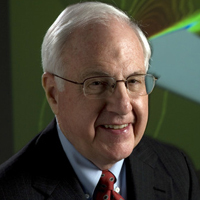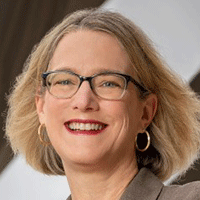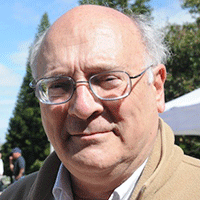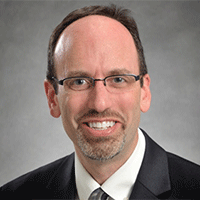
Monday, April 29, 8:00am
Earl Dowell
William Holland Hall Distinguished Professor
Pratt School of Engineering
Duke University
Presentation Title: Adventures in Reduced Order Modeling
Abstract: Reduced order models (ROM) have captured the interest and effort of many investigators over the years. As is well known the cost of computation can easily outpace the available computational resources, especially for multidisciplinary mathematical/computational models. The presentation is a personal account of one investigator's journey, enabled by substantial contributions from colleagues in several organizations over the years. It is intended to be an account of key ideas as seen from a single perspective. By a reduced order model is meant a model that provides a substantial reduction in the size nd cost of the original computational model without any essential loss in accuracy. And the motivation for creating such a ROM is not only to reduce the computational cost. By extracting the essential elements of a more elaborate model a much wider range of parameters in the model may be studied and the interpretation of the results may be made easier, thereby advancing out understanding of the model and they physical phenomena it is interned to describe.
Biography: Dr. Dowell is an elected member of the National Academy of Engineering, an Honorary Fellow of the American Institute of Aeronautics and Astronautics (AIAA) and a Fellow of the American Academy of Mechanics and the American Society of Mechanical Engineers. He has also served as Vice President for Publications and member of the Executive Committee of the Board of Directors of the AIAA; as a member of the United States Air Force Scientific Advisory Board; the Air Force Studies Board, the Aerospace Science and Engineering Board and the Board on Army Science and Technology of the National Academies; the AGARD (NATO) advisory panel for aerospace engineering, as President of the American Academy of Mechanics, as Chair of the US National Committee on Theoretical and Applied Mechanics and as Chairman of the National Council of Deans of Engineering. From the AIAA he has received the Structure, Structural Dynamics and Materials Award, the Von Karman Lectureship the Crichlow Trust Prize and the Reed Aeronautics Award; from the ASME he has received the Spirit of St. Louis Medal, the Den Hartog Award and Lyapunov Medal; and he has also received the Guggenheim Medal which is awarded jointly by the AIAA, ASME, AHS and SAE. He has served on the boards of visitors of several universities and is a consultant to government, industry and universities in science and technology policy and engineering education as well as on the topics of his research. Dr. Dowell research ranges over the topics of aeroelasticity, nonsteady aerodynamics, nonlinear dynamics and structures. In addition to being author of over three hundred research articles, Dr. Dowell is the author or co-author of four books, "Aeroelasticity of Plates and Shells", "A Modern Course in Aeroelasticity", "Studies in Nonlinear Aeroelasticity" and “Dynamics of Very High Dimensional Systems”. His teaching spans the disciplines of acoustics, aerodynamics, dynamics and structures. Dr. Dowell received his B.S. degree from the University of Illinois and his S.M. and Sc.D. degrees from the Massachusetts Institute of Technology. Before coming to Duke as Dean of the School of Engineering, serving from 1983-1999, he taught at M.I.T. and Princeton. He has also worked with the Boeing Company.

Tuesday, April 30, 8:00am
Linda Cadwell Stancin
VP Air Vehicle Engineering and Technology
Lockheed Martin Aeronautics
Presentation Title: Next Generation Structures, Materials, and Analysis Methods for Aerospace and Defense Applications
Abstract: The Aerospace and Defense landscape has changed dramatically with: 21st Century security challenges and strategic responses, digital transformation and artificial intelligence capabilities, breakthrough space missions, unmanned air vehicles, biomaterials and climate/sustainability needs. This disruptive landscape both necessitates and facilities next generation opportunities in design, analysis, and materials technologies. Innovation must be achieved rapidly and affordably, while protecting product quality. This presentation will describe the new needs, present recent Aerospace and Defense examples of next generation solutions and serve as a call for further innovations.
Biography: Linda Cadwell Stancin is currently serving as Vice President, Air Vehicle Engineering at Lockheed Martin Aeronautics Company. The Directorates in AVE include Military Operations Analysis, Conceptual Design, Flight Sciences, Vehicle Systems, Model Base Systems Engineering, Structures Engineering, Material, Specialty, and Process Engineering, Simulations, Test and Evaluation and Flight Test. AVE leadership provides functional strategies, engineering expertise and staffing to support all Aeronautics programs and technologies. Approximately 5000 AVE engineers, scientists and technicians serve Lockheed Martin and our customers. Linda is also the Engineering executive sponsor for the development and implementation of Model Base and Digital Engineering.
She previously served as Vice President of Research and Technology in Lockheed Martin’s Chief Technology Organization. This role included: Global Research and Innovation, Research Programs, Technology Integration and Intellectual Property Management, Tech Collaboration, and Emerging Operations Technologies. She also served as the Chair of Lockheed Martin's Technology Council, executive sponsor of the LM Fellows Program, Co-Chair of the EO Intellectual Property Board, and represented Engineering and Technology on the EO Diversity and Inclusion Council and the corporate Sustainability Leadership Group.
She joined Lockheed in March 2018 from Spirit AeroSystems to stand up Emerging Technologies for Digital Transformation. At Spirit AeroSystems, Linda was the executive leader of Research and Manufacturing Technology for the corporation. She led teams across multiple sites, including a research site in Scotland. Her teams provided research and engineering enabling significant OEM and other business wins. She was also the technical executive responsible for Intellectual Property strategy and the sponsor of the Technical Fellowship. Prior to this role she was the Director of Corporate Structures Engineering and Technology, including laboratories, structures analysis and certification, material and process engineering, and executive skill team leadership for Engineering.
Before joining Spirit, Linda worked at the Boeing Company for 16 years. Her last role was as senior manager for Composites, Interiors and Finishes Technologies for Boeing Commercial Airplanes. She also led the multidisciplinary skill area for the enterprise. Prior to this role she led corporate research and technology support to BCA Product Development.
Linda is currently on the Board for the Manufacturing Institute MxD. She advises and was an affiliate professor at the University of Washington in Seattle. She received her Ph.D. in Engineering from the University of Illinois Urbana-Champaign with research in materials science. She has multiple publications and patents.

Tuesday, April 30, Awards Lunch Presentation
Dr. William A. Sirignano
Distinguished Professor of Mechanical and Aerospace Engineering
University of California, Irvine
Presentation Title: Liquid Atomization: Vorticity Dynamics and Real-fluid Thermodynamics
Abstract: The presentation is an overview of multi-dimensional, unsteady solutions of the Navier-Stokes equations (NS) for liquid jets moving through a gas with the description of liquid deformation through a cascade involving sequential formation of smaller and smaller liquid structures. We analyze round and slot jets for the temporal mode and the spatially developing round jet. Interface tracking and curvature determination occur simultaneously with the NS solutions while the vorticity field is determined by post processing using λ2 and λρ methodologies. Vorticity dynamics explains the physical behaviors for both ideal fluids and real fluids.
A wide range is considered for the density ratio of the two fluids. In the study of incompressible gas and liquid without phase change, three different physical behaviors can occur depending on the values of Reynolds number (Re) based on liquid properties and the Weber number (We) based on gas properties. For real fluids at higher pressures, coupling of NS with the energy and species-continuity equations is essential; change of phase, molecular mixing in both phases, liquid compressibility, and heat transfer become important. The behavior is very different from the ideal-fluid behavior in the lower-pressure case because of reduced surface tension, liquid compressibility, and phase change. The wrong belief of many that two phases are not present and a diffusion process is dominant is clearly contradicted.
Biography: Dr. Sirignano was a Professor at Princeton University from 1967 to 1979 after receiving his Ph.D. from there in 1964. He was the George Tallman Ladd Professor and Department Head at Carnegie-Mellon University from 1979 to 1984 before becoming the Engineering Dean at UCI. He left the deanship and currently he is a Distinguished Professor of Mechanical and Aerospace Engineering at UCI.

Wednesday, May 1, 8:00am
Steve Chisholm
Vice President and Chief Engineer
Boeing Mechanical and Structural Engineering
Presentation Title: Smart Manufacturing: Impact on Productivity, Sustainability and Workforce
Abstract: In virtually everything we do in engineering we generate a great amount of data. Sometimes we are data rich and insight poor. Sometimes we can leverage a data-centric approach to unlock a new way to approach engineering and manufacturing. This presentation will focus on three aspects that intersect in the smart manufacturing area, and leverage additive manufacturing in aerospace as a primary example. These intersecting aspects are: digital engineering impact on productivity, digital engineering and additive manufacturing impacts on the workforce, and impact of additive manufacturing on sustainability.
Biography: Steve Chisholm is the Vice President and Chief Engineer for Boeing Mechanical and Structural Engineering, a team of more than 9,000. In this capacity, he is responsible for independent technical oversight for product safety, quality and integrity, and he leads the establishment of the technical roadmap for the function. Steve ensures the development of the functional team, the application and curation of design practices, and he drives the replication of best practices for Mechanical and Structural Engineering across the Boeing enterprise.
Previously, Steve was the Boeing Commercial Airplanes (BCA) Vice President and Senior Chief of Structures Engineering. In this capacity, he set the Structures technical direction and technology readiness for Structures, ensuring overall structural integrity of Boeing's products and services across all the commercial offerings, and for our future products.
Chisholm is a strong supporter of airplane safety. He was an Authorized Representative, has long been involved in safety and compliance issues, and he was a member of the Boeing Technical Fellowship before entering management. Chisholm has been an active member of several airplane accident investigations and continues to provide leadership to the structures team that supports investigations.
In addition to his responsibilities at Boeing, Steve is the executive sponsor for the company relationship with the University of Washington and a member of the university’s visiting committee for the college of engineering. He also serves on the Industry Advisory Board for the American Society of Mechanical Engineers (ASME) and as part of ASME’s Committee on Engineering Education. Steve is passionate about the next generation of engineers and allyship for those who are underrepresented in engineering. Chisholm joined Boeing in 1986 as a structural stress analyst on the 747 and 767 programs. He holds a Bachelor of Science in mechanical engineering from the University of Washington and a Masters in business administration from Seattle University.